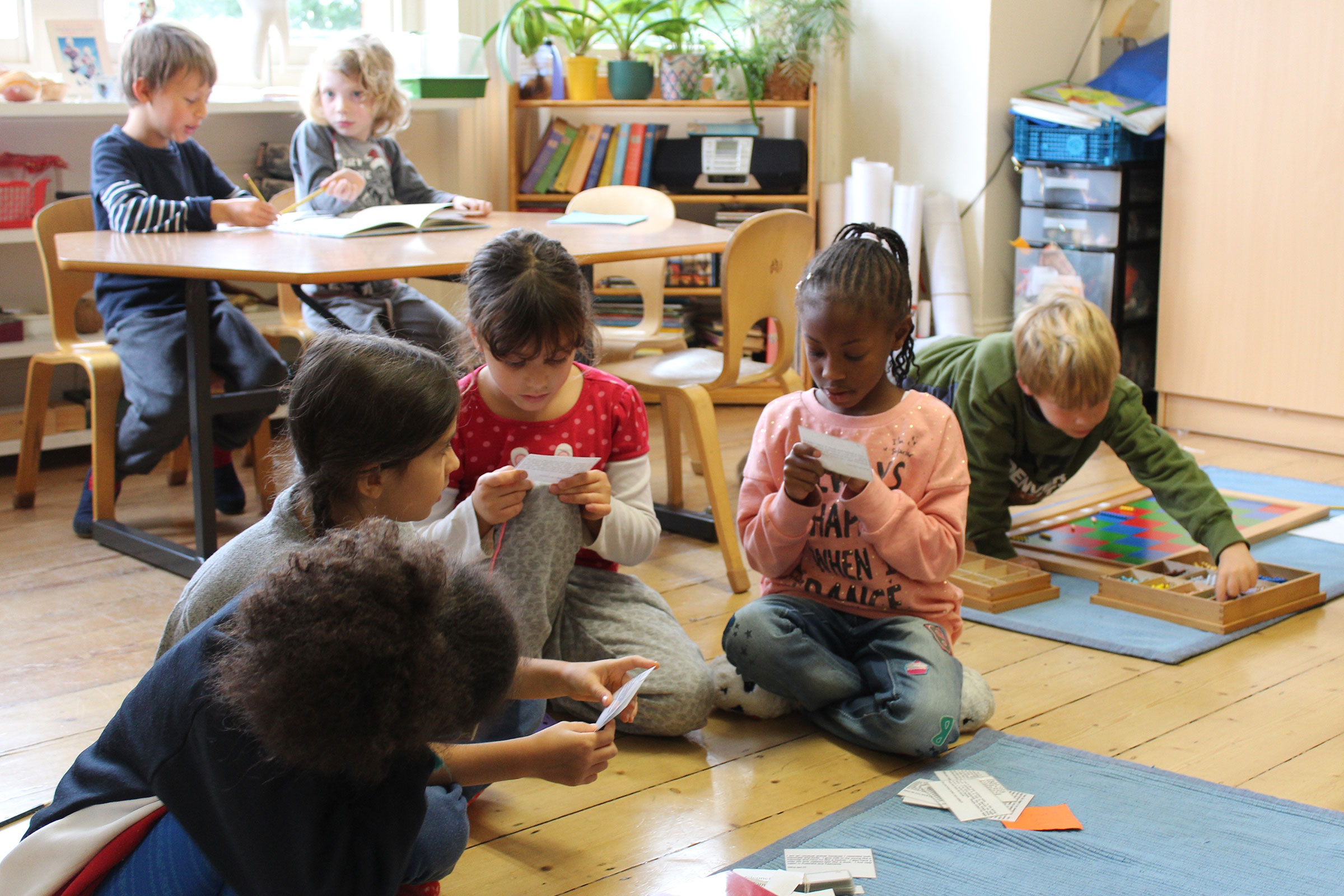The best way to introduce a second language is to approach it as the acquisition of a child’s first language. Spoken language is easily absorbed by a child under the age of 3 and then the spoken language is refined and enhanced when the child is 3-6 years of age. In order to follow the patterns/supports offered for acquiring a first language, to acquire a second language we would have a native speaker as the language model for the second language. In a dual-language family, each person would speak only their native language until the child is speaking that language. Children absorb language along with all the other characteristics of each person.
In a community/classroom environment, we would have a native speaker for each language. As the child’s spoken language expands, experiences leading to writing are given via sandpaper letters and the moveable alphabet. If the second language is a different character system those symbols would be experienced separately. “Today, do you want to use the English sandpaper letters or the Chinese characters?” On this foundation of spoken language and written language the ability to read both languages slowly emerges.
In a bilingual elementary Montessori environment, grammar for both languages is dealt with. Feeding the elementary child’s inquisitive mind, children will begin to ask, “Why in English does the adjective come before the noun while in Romance languages the adjective comes after the noun?” The grammatical structure of each language is explored.
